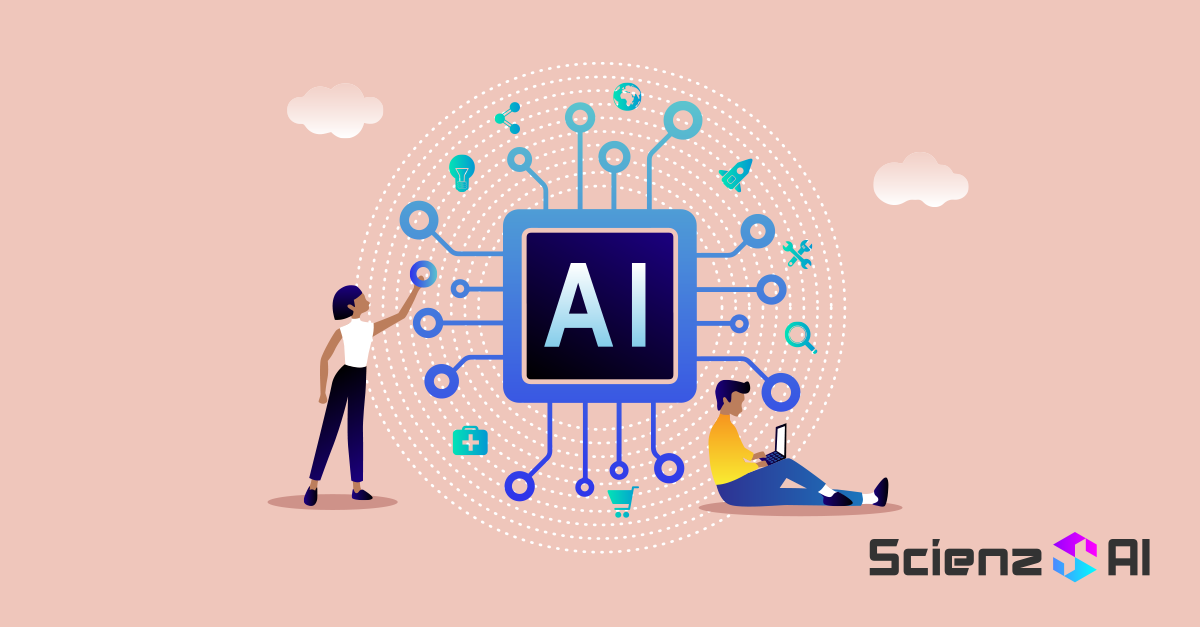Marketers are leveraging artificial intelligence, particularly generative AI, in their advertising campaigns to tap into a wide variety of functions, from generating ad copy and creative to predicting campaign performance to real-time analytics and reporting. They are also using AI to optimize their ad budgets, scale up ad production, and sneakily peek into the competitor’s strategy.
Leading ad platforms Google Ads and Meta Ads harness AI for selling, targeting, and seeding ads into vast ad networks – think millions of digital places – by the microsecond. AI also uses ad frequency and relevance to determine ad prices and display rates on Meta-owned Facebook and Instagram.
Benefits of AI in Advertising
Hundreds of use cases for AI-driven advertising exist today. Below are some of them, demonstrating the most potent benefits of the novel technology to the industry.
- Ad creation and management – Using natural language processing (NLP) and natural language generation (NLG), genAI generates copy in a fraction of the time it usually takes and at scale. Human copywriters then typically refine the copy and work in tandem with their AI counterparts to polish the ad. AI also produces images and videos for your ads, with highly artistic and often photorealistic outcomes.
- Real-time personalization – AI algorithms quickly analyze multiple ads, offering insights into the parts that perform best (headline, image, or the call to action or CTA). This way, advertisers can better personalize ads for individual users or audience segments, tailoring the content and delivery – from the right platforms to the ideal times for displaying ads – to match the audience’s interests and preferences.
- Budget and performance optimization – AI can take on spend optimization, recommending how to best achieve KPIs and presenting a full budget around it. On its own, AI can also save advertisers significant time by outlining ways to improve performance and highlighting performance issues. Several AI tools look at past audiences vis-à-vis ad performance, then weigh the information against the set campaign goals and real-time performance data.
- Competitive analysis – AI can even spy on your competitors, giving out details on which ads your counterparts are running, on which platforms the action is happening, the exact offer, as well as how much they are spending. This can provide you with a full picture of their strategy, with AI even giving added insights to outperform them.
- Predictive capabilities – Trained on huge proprietary AI data sets (imagine millions of highly successful ad campaigns), AI can anticipate trends and movements before they surface, allowing advertisers to stay ahead of the curve. This leads to data-driven decision-making in your ranks, creating a more relevant, engaging, and powerful ad experience. This means no more second-guessing when it comes to how effective the ad will be before it even launches.
Google, AdTech Giants Lead the Way
As early as May 2023, Google has positioned its ad products as “privacy-first and AI-powered.”
“Building user trust is vital to the long-term durability of the ad-supported internet. We want to help you navigate this moment with Google Ads products that are privacy-first and AI-powered, the tech giant noted in a blog post.
Here are ways that AI works its magic on mass-scale ad campaigns at ad tech powerhouses:
- Google – Google Ads taps into AI in several ways:
- Google’s AI-powered campaigns (Performance Max or P-Max) are generated automatically, versus previous iterations where writers and designers worked on ad banners and videos. Algorithms source the advertiser’s website and marketing collateral and then generate customized creative assets aligning with audiences and ad objectives.
- To perform advanced campaign optimization, Google’s AI leverages real-time data to adjust bids and targeting, which then lets advertisers achieve the highest possible return on investment.
- Google conversational AI enables users to edit and manage ad campaigns via chat, a similar benefit delivered by OpenAI’s genAI chatbot ChatGPT.
- Meta – Its Advantage+ uses machine learning to identify and aim for your highest-value customers across all of Meta’s family of apps and services, with minimal human intervention. It simplifies campaign setup and management by running fewer campaigns without the need to adjust or refresh. Meta is also experimenting with AI chat on WhatsApp, along with automatic creative resizing for Instagram ads.
- WPP – The largest advertising agency in the world partnered with Nvidia for genAI in advertising, where WPP teams access content from Adobe and Getty Images to produce ad content in large volumes without mounting on-location production and with the ability to rapidly deploy campaigns across physical and digital channels.
AI is also already widely explored in creative ad shoots. In 2023, global hotel search firm Trivago released a new campaign that, instead of casting actors in each country, selected just one and used AI to translate his voice into almost a dozen languages.
Trivago used to do 35 productions with 20 actors to reach 40 markets – a “very costly and a long endeavor,” its CEO Johannes Thomas told Digiday.
The company is experimenting with AI in its advertising campaign in multiple ways, including running hundreds of tests every quarter to enhance the product experience. It is also exploring how fully AI-generated characters can be localized to each market’s look and feel.
AI in Advertising: What Lies Ahead
For industry insiders, AI integration in advertising is more than just a fad, but instead a close view into the sector’s future. Anticipation lies in the following capabilities:
- AI-powered tools for creativity, increasingly shaping the production of “graphics and prose that resonate with viewers.”
- Contextual targeting, where AI will assess both user behavior and contextual factors that let advertisers serve ads that are relevant to the target customers.
- Optimizing ads for voice and visual search, ensuring the visibility of businesses in these dynamic search paradigms.
- Delivering consistent messages across multiple channels and devices for a seamless brand experience.
Considerations remain, particularly for enterprise-level compliance, including privacy and ethical concerns around the collection and use of user data. This, however, can be sufficiently addressed by striking a balance between personalization and consumer privacy.
Leaning into AI promises not only enhanced campaign performance but also the marketer’s time and bandwidth to focus on higher-impact work that drives growth and a better bottom line.
Related Readings:
Gen AI: A Game Changer for CMOs
AI-Powered Personalized Marketing Fast Becoming a ‘Must Have’
The AI Revolution in B2B Marketing: 10 Transforming Strategies for Results




